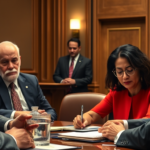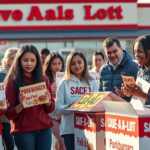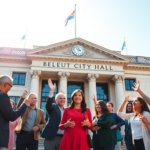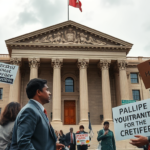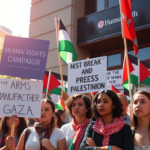Nearly Half of All LGBTQ+ Characters to Vanish from TV Next Season, GLAAD Study Reveals
In a startling revelation, a recent GLAAD study has uncovered a potential crisis in LGBTQ+ representation in television. As reported, due to series cancellations and endings, nearly half of all LGBTQ+ characters currently on screen will not make it to the next television season. Even as LGBTQ+ character representation saw a modest 4% increase this past season, the removal of such a significant portion sparks concern over the future portrayal of diverse identities on TV.
Context: A Troubling Trend Amid Modest Gains
The 2024-25 television season boasted 489 LGBTQ+ characters, a slight uptick from previous years but still far from the 2021-22 peak of 637 characters. This year’s increase has been deemed inadequate in light of the looming decrease in representation following the end of series that host many of these characters.
Particularly at risk is transgender representation. From a count of 33 trans characters this year, only four will persist in renewed series, posing a grave threat to the breadth of trans visibility on TV. Megan Townsend, Director of Entertainment Research at GLAAD, expressed alarm: “We have not had a ton of announcements or news about new series and returning series within the research period that would make up for some of these losses.”
Impact on Local Communities and Cultural Visibility
For communities across the United States, including residents in more cosmopolitan or diverse locales like New York or Los Angeles, these changes could have tangible effects. Many in these communities rely on media representation to see themselves reflected in narratives, fostering a sense of belonging and validation.
Jasmine Rivera, a local activist in Austin, Texas, weighed in, stating, “The loss of LGBTQ+ characters can feel like a direct hit to our stories, which are already underrepresented. It’s crucial for young people, especially, to see themselves in the media they consume.”
Beyond representation, the portrayal of queer people of color faces specific pressures. Although they constitute 51% of all LGBTQ+ characters, certain ethnic groups such as Indigenous and Black communities see dwindling visibility. The ripple effect on community morale and identity affirmation should not be underestimated.
Media Influence and Political Climate
Amidst a politically charged atmosphere, networks are urged to stand firm in their commitment to inclusive storytelling. GLAAD’s President and CEO, Sarah Kate Ellis, pointed out the broader implications: “With hateful rhetoric running unchecked from politicians and news media, it is imperative that networks and streamers do not back down.”
The shrinking representation, coupled with minimal portrayal of LGBTQ+ characters living with HIV, highlights a gap that fails to educate and inform audiences about critical, ongoing issues such as the impact of HIV.
Supporting the Demands of a Changing Audience
Particularly compelling is the growing demand for inclusive media among Gen Z viewers, with 23% identifying as LGBTQ+. This demographic’s substantial buying power, estimated at $1.4 trillion, holds sway over media consumption trends and social engagement.
Networks like FX and HBO are recognized for fostering inclusivity, featuring shows such as “The Last of Us” and “What We Do in the Shadows.” Yet, the need for broader industry commitment endures.
Industry analyst Dr. Michael Collins elaborates, “Gen Z’s engagement and advocacy for inclusive media should signal to networks that fostering these narratives is not only socially responsible but financially beneficial. This generation doesn’t just watch TV; they actively support and engage with content that resonates with their values.”
Future Implications and Local Responses
As the TV landscape braces for change, the potential loss in LGBTQ+ visibility raises questions about the future of diverse storytelling. The cultural impact on local communities particularly highlights the value of advocacy and awareness.
Local resources, such as community centers and LGBTQ+ advocacy groups, work to fill the gap. In Philadelphia, the William Way LGBT Community Center provides workshops and discussions on media representation, offering platforms for residents to express concerns and hopes for future portrayals.
In contrast, media representatives and producers should consider how decisions made by entertainment executives impact not only industry dynamics but also societal narratives and acceptance.
Conclusion
While the prospective disappearance of nearly half of all LGBTQ+ characters signifies a substantial step backward, it also underscores the importance of advocacy and inclusive storytelling. As communities across the nation grapple with these changes, ongoing efforts aimed at supporting LGBTQ+ narratives remain imperative. Forward-thinking strategies and industry accountability can transform this challenge into an opportunity for growth, inclusion, and enriched storytelling for all.


